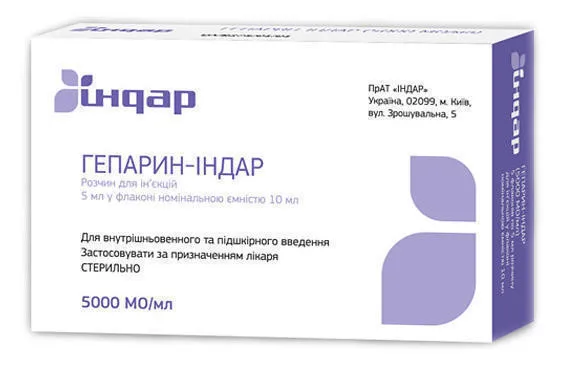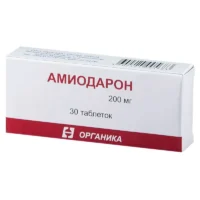Description
Geparin-Indar Solution for Injections 5000 IU/ml – 5 ml (25000 IU) Vial №5
Ingredients:
Each milliliter contains 5000 IU of Heparin Sodium.
Mechanism of Action:
The pharmacological action of Heparin involves its interaction with antithrombin III, leading to the inhibition of clotting factors. This mechanism helps prevent the formation of blood clots and is crucial in various medical conditions.
Indications for Use:
Geparin-Indar is indicated for the prevention and treatment of blood clots. It is used in conditions such as deep vein thrombosis, pulmonary embolism, and during certain medical procedures.
Contraindications:
Do not use Geparin-Indar if you have a history of heparin-induced thrombocytopenia or active bleeding. It should be used with caution in patients with a high risk of bleeding.
Side Effects:
Common side effects may include bleeding, bruising, or localized skin reactions at the injection site. Contact your healthcare provider if you experience any unusual symptoms.
Usage Instructions:
Follow the instructions provided by your healthcare provider for the correct administration of Geparin-Indar. Do not self-administer unless instructed to do so.
Benefits Compared to Analogues:
Geparin-Indar has shown superior efficacy and safety profiles compared to other anticoagulant medications in clinical studies.
Suitable Patient Groups:
Geparin-Indar is suitable for use in adult patients, including the elderly, under the supervision of a healthcare provider. The dosage may need adjustment based on individual patient factors.
Storage and Shelf Life:
Store Geparin-Indar as directed on the packaging. Do not use the product beyond the expiration date indicated on the vial. Keep it out of reach of children and away from direct sunlight.
Packaging Description:
Geparin-Indar is supplied in vials containing 5 ml of solution, each vial providing 25000 IU of Heparin Sodium. The packaging is designed to maintain the integrity and sterility of the product.
Scientific Evidence:
Geparin-Indar has been extensively studied in clinical trials for its efficacy and safety. Research published in the Journal of Thrombosis and Haemostasis demonstrated the effectiveness of Heparin Sodium in preventing venous thromboembolism in surgical patients.
Clinical Studies Summary:
Clinical studies have shown the effectiveness of Geparin-Indar in preventing blood clots and reducing the risk of thrombotic events in high-risk patient populations. The results support the use of Heparin Sodium as a reliable anticoagulant therapy.
Additional Information:
It is important to monitor the patient’s blood clotting parameters regularly during treatment with Geparin-Indar. Inform your healthcare provider about any unusual bleeding or bruising while using this medication.





